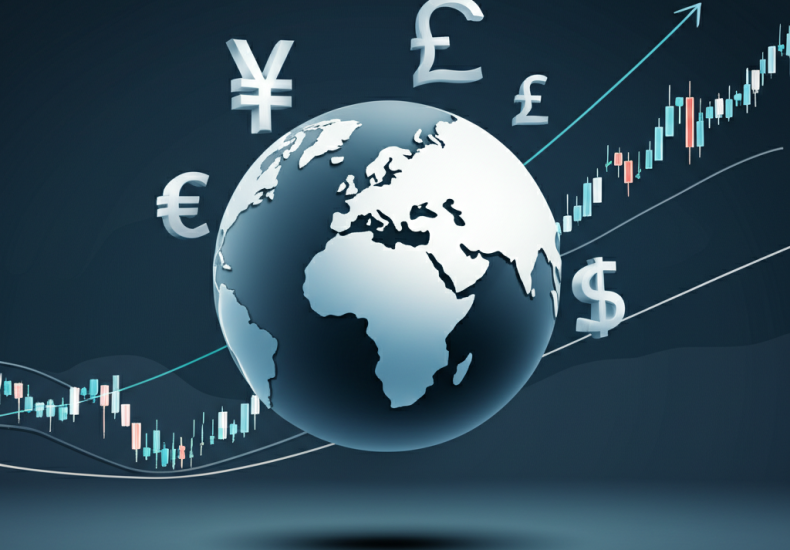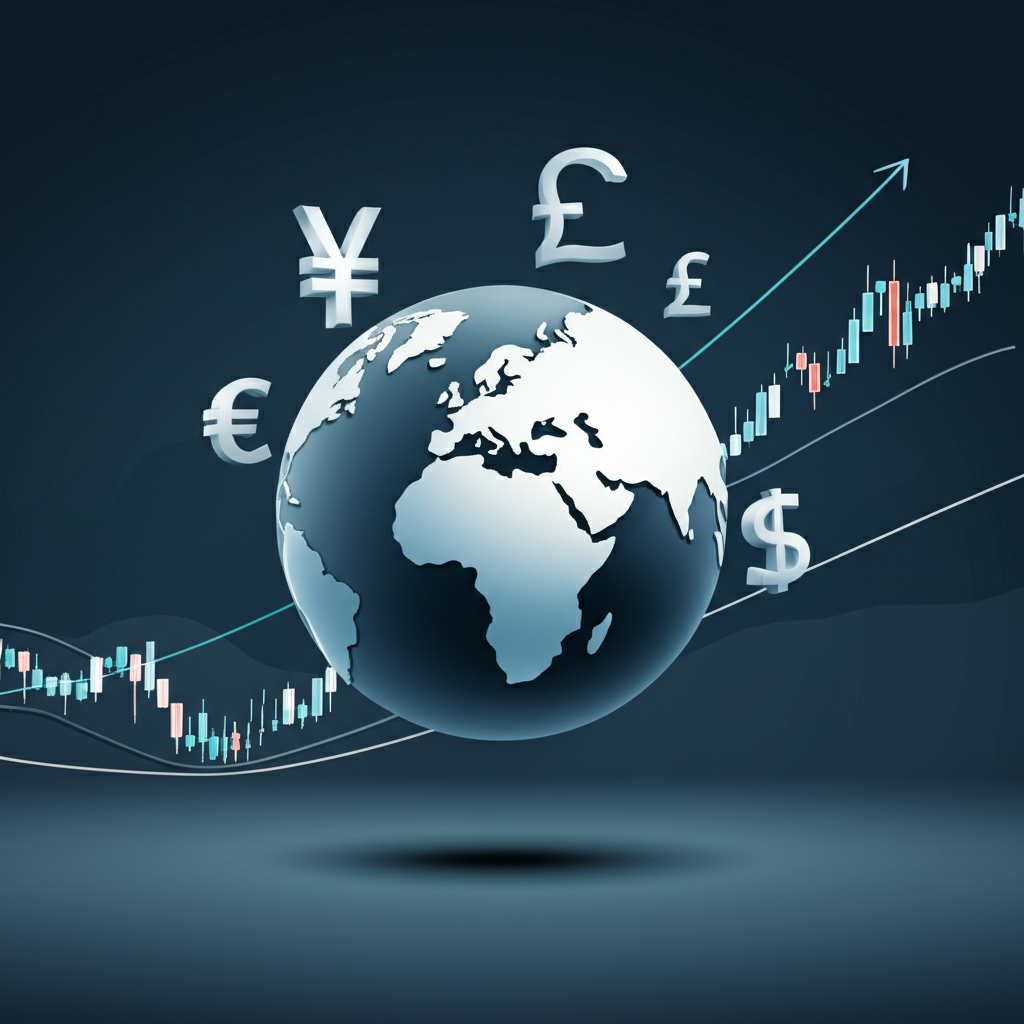
Forex ETFs: Unlocking Global Currencies for Smarter Portfolio Diversification
Table of Contents
ToggleIntroduction to Forex ETFs: What They Are and Why They Matter

Foreign exchange exchange-traded funds—commonly referred to as Forex ETFs—offer investors a streamlined way to gain exposure to currency markets without stepping into the fast-paced, complex world of direct forex trading. These funds are designed to track the value of a single foreign currency or a group of currencies relative to the U.S. dollar, making them accessible tools for those looking to speculate on exchange rate movements, diversify their holdings, or protect against currency-related risks. As global investing continues to grow in popularity, so does the demand for instruments that simplify international market access. Forex ETFs meet that need by providing a regulated, transparent, and liquid investment vehicle that fits seamlessly into traditional brokerage accounts. For many, they represent a practical bridge between conventional asset classes and the dynamic realm of foreign exchange.
Demystifying Currency Exposure: Why Investors Look Beyond Traditional Assets

Currency exposure plays a subtle yet powerful role in shaping investment outcomes, especially for portfolios with international components. When exchange rates shift, the value of foreign assets and liabilities changes in relation to an investor’s home currency, sometimes boosting returns—or eroding them. Savvy investors don’t ignore this force; instead, they actively manage it. One major reason is diversification: currency movements often follow different drivers than stocks or bonds, such as central bank policies, trade balances, or political developments. This lack of correlation can help reduce overall portfolio volatility. Others use currency exposure to speculate on macroeconomic trends, betting on a currency’s rise due to strong economic performance or falling interest rates elsewhere. Additionally, certain currencies—particularly those tied to commodity exporters—can serve as a hedge against inflation, preserving purchasing power when domestic prices climb. In times of geopolitical uncertainty, holding currencies from stable economies may also provide a safe haven, shielding wealth from regional instability.
How Do Forex ETFs Work? Mechanisms and Underlying Assets

At their core, Forex ETFs mirror the performance of specific currencies using financial derivatives or direct holdings. Unlike retail forex traders who buy and sell currency pairs in the interbank market, ETFs typically use instruments like futures contracts, forward agreements, or physical foreign currency deposits to achieve exposure. The fund’s net asset value (NAV) is structured to move in line with the underlying currency or index it tracks, often measured against the U.S. dollar. To maintain accuracy, fund managers engage in regular rebalancing—adjusting positions as market conditions change or contracts near expiration. This ensures the ETF remains closely aligned with its benchmark, providing investors with a reliable proxy for currency performance without requiring deep market expertise or active management.
Key Components: Futures, Forwards, and Spot Markets
Most Forex ETFs rely heavily on futures and forward contracts to gain currency exposure. A currency futures contract is a standardized agreement traded on regulated exchanges, obligating the buyer to purchase (or seller to deliver) a set amount of a foreign currency at a predetermined rate on a future date. These contracts offer transparency and liquidity, making them ideal for ETFs. Forward contracts, on the other hand, are private, over-the-counter agreements tailored to specific terms between two parties. While less transparent, they allow for more customization. Since these contracts have expiration dates, ETFs must continuously roll them—selling expiring positions and purchasing new ones with later maturities. This rolling process introduces a critical factor known as roll yield. In a contango market, where future prices exceed spot prices, rolling can lead to losses as the fund buys higher-priced contracts. Conversely, in backwardation, when future prices are lower, rolling can generate gains. Over time, these dynamics can meaningfully impact an ETF’s returns, especially in markets where contango is persistent.
Types of Forex ETFs: Navigating Your Options

The Forex ETF landscape is diverse, offering products tailored to various strategies and risk profiles. Whether you’re aiming for broad exposure or targeting a specific currency move, there’s likely a fund that fits. These ETFs differ based on the number of currencies they track, their underlying assets, and their investment approach. Understanding these categories is essential for aligning your choices with your financial goals.
Single Currency ETFs (e.g., USD, EUR, JPY)
Single currency ETFs focus on the performance of one foreign currency relative to another, usually the U.S. dollar. For example, an ETF tracking the euro-dollar exchange rate allows investors to benefit if the euro strengthens. These funds are ideal for those with a strong conviction about a particular economy or monetary policy shift. If you believe the Bank of Japan will maintain low rates while the U.S. Federal Reserve hikes, a Japanese yen ETF could be a strategic play. Examples include funds targeting the British pound, Canadian dollar, or Australian dollar. Because they concentrate on one currency pair, their performance can be more volatile, but they offer direct exposure without the noise of multiple currency influences.
Currency Basket ETFs
Instead of betting on a single currency, basket ETFs provide diversified exposure across several currencies. The most well-known example is the U.S. Dollar Index (DXY), which measures the dollar’s strength against a weighted basket of six major currencies: the euro, yen, pound, Canadian dollar, Swedish krona, and Swiss franc. By spreading exposure, these ETFs smooth out the impact of extreme moves in any one currency, potentially reducing volatility. They’re particularly useful for investors forming macro-level views—such as expecting broad dollar weakness due to global monetary easing—or for those seeking a more balanced approach to currency investing without overcommitting to a single nation’s economic fate.
Inverse and Leveraged Currency ETFs
Designed for short-term traders, inverse and leveraged Forex ETFs amplify exposure to currency movements. Inverse ETFs generate positive returns when a currency depreciates, allowing investors to profit from declines without short-selling. Leveraged ETFs, meanwhile, aim to deliver multiples—such as 2x or 3x—the daily return of their underlying index. While powerful in trending markets, these funds carry significant risks. Due to daily reset mechanics, their long-term performance can diverge sharply from the underlying index, especially in volatile or sideways markets. This phenomenon, known as volatility decay, makes them unsuitable for buy-and-hold investors. The U.S. Securities and Exchange Commission (SEC) has issued warnings about the risks of leveraged and inverse ETFs, emphasizing their use only by experienced traders with active monitoring capabilities.
Advantages of Investing in Forex ETFs
Forex ETFs have gained traction because they simplify access to a market traditionally reserved for institutions and seasoned traders. By packaging currency exposure into a familiar stock-like structure, they open doors for a wider range of investors.
Accessibility and Diversification
One of the biggest draws of Forex ETFs is ease of access. You don’t need a specialized forex account—just a standard brokerage platform. This lowers the entry barrier significantly, allowing everyday investors to participate in currency markets with the same tools they use for stocks and bonds. Beyond accessibility, these ETFs add a valuable diversification layer. Because currency movements often respond to different catalysts—like interest rate decisions or geopolitical events—they don’t always move in sync with equities or fixed income. Adding currency exposure can therefore help smooth portfolio swings and improve risk-adjusted returns over time, as noted by Investopedia in their analysis of currency ETFs.
Liquidity and Transparency
Trading on major stock exchanges, Forex ETFs benefit from high liquidity, meaning investors can enter and exit positions quickly during market hours at competitive prices. Unlike opaque over-the-counter forex trades, ETFs disclose their holdings regularly, often daily. You can see exactly what assets the fund holds, how much it costs to own (via the expense ratio), and how closely it tracks its benchmark. This transparency builds trust and empowers investors to make informed decisions, a significant advantage over traditional forex trading where pricing and execution can be less clear.
Lower Barrier to Entry Compared to Direct Forex
Direct forex trading can be daunting. It often involves complex margin rules, high leverage (sometimes 50:1 or more), and 24-hour market access that demands constant attention. Forex ETFs strip away much of that complexity. You buy shares like any other stock, typically with 1:1 exposure unless using a leveraged product. There’s no need to understand bid-ask spreads, pip values, or rollover interest. This simplicity makes them ideal for investors who want currency exposure without the operational burden, offering a safer, more manageable entry point into global markets.
Risks and Disadvantages of Forex ETFs
While Forex ETFs offer many benefits, they are not without risks. Understanding these pitfalls is crucial for managing expectations and avoiding unintended losses.
Currency Volatility and Market Risk
Currency markets are inherently volatile. Exchange rates can swing sharply in response to economic data, central bank surprises, political events, or unexpected global shocks. A single speech from a central banker or a geopolitical flare-up can trigger rapid moves that impact ETF values within minutes. This volatility means investors must be prepared for sudden drawdowns. Unlike bonds or dividend-paying stocks, currencies don’t generate income—returns depend entirely on price changes, making timing and macroeconomic insight more critical.
Tracking Error and Expense Ratios
No ETF perfectly replicates its benchmark, and Forex ETFs are no exception. Tracking error—the difference between the ETF’s performance and its index—can arise from transaction costs, management fees, or inefficiencies in rolling futures contracts. Over time, even small deviations can compound, leading to meaningful underperformance. Additionally, all ETFs charge an expense ratio, which eats into returns. While most currency ETFs have moderate fees, these costs are still a drag, especially in flat or low-volatility markets where gains are minimal to begin with.
Contango and Backwardation in Futures-Based ETFs
Many Forex ETFs use futures contracts, and the need to roll these positions introduces a structural challenge. In contango—when future prices are higher than spot prices—the ETF sells low and buys high during each roll, creating a persistent drag on returns. This is common in stable or appreciating currencies. Backwardation, where future prices are lower, can boost returns as the fund benefits from rolling into cheaper contracts. However, contango tends to dominate in many currency futures markets, meaning investors in long-position ETFs may face a headwind over time. This is especially true for popular funds tracking the U.S. dollar or low-yielding currencies.
Counterparty Risk and Other Operational Risks
While ETFs are generally well-protected, those using over-the-counter derivatives like forward contracts carry counterparty risk—the chance that the other party in a contract defaults. Reputable fund providers mitigate this through collateral and diversification, but the risk isn’t zero. Other operational issues include regulatory changes, custodian failures, or technical disruptions that could temporarily affect trading or pricing. While rare, these factors underscore the importance of choosing ETFs from established, transparent issuers with strong risk management practices.
Forex ETFs vs. Direct Forex Trading: A Comprehensive Comparison
Choosing between Forex ETFs and direct forex trading depends on your experience, goals, and risk appetite. Both provide currency exposure, but the mechanics and implications differ significantly.
| Feature | Forex ETFs | Direct Forex Trading |
| :——————– | :—————————————— | :—————————————————– |
| **Accessibility** | Standard brokerage account | Specialized forex broker account |
| **Leverage** | Limited (typically 1:1, unless leveraged ETF) | High (often 1:50 to 1:500) |
| **Complexity** | Simpler, like trading stocks | Complex, requires deep market understanding |
| **Diversification** | Single currency or currency baskets | Any currency pair, highly customizable |
| **Trading Hours** | Exchange trading hours | 24/5 market access |
| **Fees** | Expense ratios, trading commissions | Spreads, commissions, overnight financing (swap) fees |
| **Risk** | Market volatility, tracking error | Market volatility, high leverage risk, counterparty risk |
| **Regulation** | Regulated as securities (e.g., SEC, FINRA) | Regulated by specific forex authorities (e.g., NFA, FCA) |
Differences in Execution, Leverage, and Regulatory Oversight
Executing trades in Forex ETFs is straightforward—buy or sell shares through your brokerage, just like a stock. Pricing is transparent, and settlement follows standard equity procedures. Direct forex trading, by contrast, involves navigating bid-ask spreads, margin requirements, and leverage settings on a specialized platform. Leverage is a double-edged sword: while ETFs usually offer 1:1 exposure (except for leveraged products), direct forex traders can control large positions with minimal capital, magnifying both gains and losses. Regulatory oversight also differs. ETFs fall under securities regulators like the SEC, offering investor protections such as custody rules and disclosure requirements. Direct forex trading is overseen by futures or forex-specific bodies like the NFA or FCA, with different standards and compensation schemes.
Investor Suitability: Who Should Use Which?
Forex ETFs are best suited for beginner to intermediate investors seeking exposure without complexity. They fit well into long-term strategies focused on diversification, hedging, or tactical allocation. Their simplicity, transparency, and lower leverage make them a safer choice for most retail investors. Direct forex trading, with its 24-hour access, high leverage, and need for constant monitoring, is better suited for experienced traders. These individuals often use technical analysis, trade short-term price movements, and manage risk actively. For them, the flexibility and speed of direct trading outweigh the added complexity.
How to Choose the Right Forex ETF for Your Portfolio
Selecting the right Forex ETF isn’t just about picking a currency—it’s about aligning the fund with your broader investment strategy. A thoughtful approach can enhance returns and reduce unnecessary risk.
Key Selection Criteria: Expense Ratios, Liquidity, and Tracking Performance
Start by comparing expense ratios—lower fees mean more of your returns stay in your pocket. A fund with a 0.40% fee will outperform a 0.75% alternative over time, all else being equal. Next, assess liquidity. Look at average daily trading volume and bid-ask spreads. High volume and tight spreads mean you can trade efficiently without slippage. Finally, review tracking performance. A low tracking error indicates the ETF closely follows its benchmark. Check historical returns against the index and examine how the fund handles contract rolls. Consistency here reflects sound management and operational efficiency.
Understanding Your Currency Exposure Goals
Clarify your objective before choosing a fund. Are you trying to hedge a foreign investment? Speculate on a central bank’s next move? Or simply diversify? If you own European equities, a weakening euro could hurt your returns—even if those stocks rise in local currency. Buying a dollar-strength ETF or an inverse euro fund could offset that risk. If you’re concerned about inflation, consider currencies from resource-rich nations like Canada or Australia, which may appreciate during commodity booms. Your goal will determine whether a single-currency, basket, or inverse ETF is the right fit.
Top Forex ETFs to Consider (List and Overview)
Several reputable providers offer Forex ETFs that have stood the test of time. Here are some widely recognized options:
* **Invesco DB US Dollar Index Bullish Fund (UUP):** Tracks the U.S. dollar’s strength against a basket of six major currencies. A go-to choice for investors bullish on the dollar.
* **Invesco DB US Dollar Index Bearish Fund (UDN):** The inverse of UUP, designed to rise when the dollar weakens against the same basket.
* **CurrencyShares Euro Trust (FXE):** Offers direct exposure to the euro versus the U.S. dollar, using physical euro deposits to track performance.
* **CurrencyShares Japanese Yen Trust (FXY):** Mirrors the yen’s value against the dollar, appealing during periods of yen strength or safe-haven demand.
* **Vanguard and Fidelity** do not offer standalone currency ETFs. However, they provide international funds with optional currency hedging, allowing indirect exposure through diversified equity or bond portfolios.
* **BlackRock (iShares)** offers a range of global ETFs, some of which include currency-hedged variants, enabling investors to neutralize currency risk in international holdings without directly trading currency ETFs.
Advanced Strategies and Portfolio Integration
Beyond basic exposure, Forex ETFs can play a strategic role in sophisticated portfolio management, helping investors navigate complex global dynamics.
Hedging International Equity Exposure with Currency ETFs
When you invest in foreign stocks, you’re exposed to two risks: the performance of the company and the movement of the local currency. If the euro falls 10% against the dollar, your European stock gains could be wiped out—even if the stocks rose in euros. Currency ETFs offer a solution. A U.S. investor can buy an inverse euro ETF or a dollar-strength fund to hedge this risk. This approach effectively isolates the equity return from currency fluctuations, preserving the value of international investments during adverse exchange rate moves.
Inflation Hedging and Global Macro Strategies
Certain currencies can act as a buffer against inflation. For example, the Canadian dollar often moves with oil prices, and the Australian dollar with broader commodity trends. During inflationary periods, when raw material costs rise, these currencies may strengthen. Allocating to ETFs tracking such currencies can provide indirect exposure to commodity markets. In global macro strategies, investors use currency ETFs to express views on economic policy. If you expect the European Central Bank to cut rates while the Fed holds firm, shorting the euro via an ETF could be a cleaner play than trading multiple currency pairs.
Considerations for US Investors (Taxation and Regulation)
U.S. investors face unique tax rules when holding Forex ETFs, particularly those structured around futures contracts. Most such funds are organized as commodity pools and taxed as partnerships. This means you’ll receive a Schedule K-1 instead of a 1099, and your gains are subject to the “60/40 rule”: 60% of profits are taxed at the long-term capital gains rate, and 40% at ordinary income rates—regardless of how long you’ve held the investment. This blended tax treatment can be more favorable than full ordinary income taxation but is more complex than standard stock ETFs. Some currency ETFs, like those holding physical deposits, are structured as grantor trusts and may be taxed more simply. However, these are less common. Given the complexity, consulting a tax advisor is strongly recommended to ensure compliance and optimize after-tax returns.
Conclusion: Harnessing the Power of Forex ETFs
Forex ETFs have transformed how investors engage with currency markets. No longer limited to institutional players or expert traders, everyday investors can now access foreign exchange exposure through a simple, exchange-traded structure. These funds offer real benefits: ease of use, transparency, and the ability to diversify or hedge within a traditional portfolio. Yet they are not without challenges. Currency volatility, tracking error, and the drag of contango in futures-based funds require careful consideration. For leveraged and inverse products, the risks multiply, especially over longer holding periods. Success with Forex ETFs comes from clarity of purpose—knowing whether you’re hedging, diversifying, or speculating—and selecting funds that align with those goals. With proper due diligence and a disciplined approach, Forex ETFs can be a powerful tool for navigating the interconnected world of global finance.
Frequently Asked Questions (FAQ)
1. Is there an ETF for forex, and how does it work?
Yes, there are ETFs specifically designed for forex, known as Forex ETFs or Currency ETFs. They work by tracking the performance of a specific foreign currency or a basket of currencies against another (often the US Dollar), usually through futures contracts, forward contracts, or direct foreign currency deposits.
2. What are the primary advantages of investing in Currency ETFs compared to direct forex trading?
Key advantages include greater accessibility through standard brokerage accounts, typically lower leverage (reducing risk), enhanced transparency of holdings, and professional management. They also offer diversification benefits and are generally simpler to understand and trade than direct forex.
3. How can investors use Forex ETFs to diversify their portfolios?
Currency movements are often uncorrelated with traditional asset classes like stocks and bonds. By including Forex ETFs, investors can potentially reduce overall portfolio volatility and enhance risk-adjusted returns, as currency performance can act as a counterbalance to other investments.
4. What are the potential risks associated with investing in leveraged or inverse currency ETFs?
Leveraged and inverse currency ETFs carry significantly higher risks. They aim to magnify daily returns, which also magnifies daily losses. Due to the effects of compounding, their performance over longer periods can diverge substantially from their stated daily objectives, making them unsuitable for long-term holding.
5. Can Forex ETFs be used as a hedging tool for international investments?
Absolutely. Investors with international equity or bond holdings can use Forex ETFs to hedge against adverse currency movements. For example, if you own European stocks, you could invest in an ETF that benefits from a weakening Euro to offset potential currency-related losses on your stock investments.
6. Which are some of the best-performing Forex ETFs available today, and what currencies do they track?
Popular Forex ETFs include those tracking the U.S. Dollar Index (e.g., Invesco DB US Dollar Index Bullish Fund, UUP), the Euro (e.g., CurrencyShares Euro Trust, FXE), and the Japanese Yen (e.g., CurrencyShares Japanese Yen Trust, FXY). Performance varies based on currency market dynamics, so “best-performing” is subjective and changes over time.
7. What is the difference between single-currency ETFs and currency basket ETFs?
Single-currency ETFs track the performance of one specific currency against another (usually the US Dollar). Currency basket ETFs, on the other hand, track a weighted group of currencies, offering broader diversification and exposure to a wider range of global economic factors.
8. How do expense ratios and tracking error impact the returns of a Forex ETF?
Expense ratios are annual fees that directly reduce your net returns. A higher expense ratio means more of your investment is consumed by fees. Tracking error represents how much an ETF’s performance deviates from its underlying benchmark. A high tracking error indicates the fund is not effectively replicating its target currency’s movements, potentially leading to underperformance.
9. Are specific brokerage platforms like Fidelity or Vanguard suitable for trading Currency ETFs?
Yes, most major brokerage platforms like Fidelity, Vanguard, Schwab, and others are suitable for trading Forex ETFs, as these funds are traded on stock exchanges just like regular stocks. While Vanguard and Fidelity may not offer their own branded currency ETFs, you can typically buy ETFs from other providers through their platforms.
10. What are the tax implications for US investors holding Forex ETFs?
For US investors, many Forex ETFs (especially those using futures contracts) are structured as commodity pools and are taxed under the “60/40 rule.” This means 60% of gains are taxed at long-term capital gains rates and 40% at ordinary income rates, regardless of holding period. Investors receive a Schedule K-1 for tax reporting. It’s recommended to consult a tax professional.
You may also like
Calendar
| 一 | 二 | 三 | 四 | 五 | 六 | 日 |
|---|---|---|---|---|---|---|
| 1 | 2 | 3 | 4 | 5 | 6 | 7 |
| 8 | 9 | 10 | 11 | 12 | 13 | 14 |
| 15 | 16 | 17 | 18 | 19 | 20 | 21 |
| 22 | 23 | 24 | 25 | 26 | 27 | 28 |
| 29 | 30 | 31 | ||||
發佈留言
很抱歉,必須登入網站才能發佈留言。